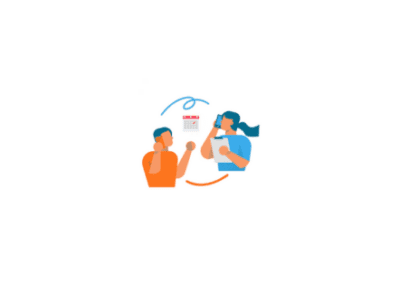Have you ever taken advantage of a free trial? If you did, you likely capitalized on that small window of opportunity without incurring any costs! Now, you must be wondering why businesses even offer free trials. It’s not like they guarantee a business sale for the company. Financially, you would say it does not make any sense. However, that’s not the case. Businesses in the 21st Century are still financially driven, yet their method is different from the traditional way. While the goal is to keep costs low and revenue high, companies have instead looked to combine financial and social logic with building “enduring success”. Free trials are an example of how modern businesses, especially software providers, get the best value from their tools and technology. Let’s get into what free trials are from the company’s point of view.
What are Free Trials?
From a customer’s perspective, free trials are just a free product or service for a short period. For a company, it’s a business model. It might sound like a costly model, but it’s one of the most efficient ways for marketing your products or services. It’s a nifty way of letting your product sell itself. They give the customer first-hand experience with the product for a period of time. Any consumer could use any of the features and see if the product fits their needs. It’s the best way for businesses to demonstrate their products’ value. After all, why tell, when you can show?
Types of free trials:
- Time-limited: The most common type, a time-limited free trial, gives customers a varying range of time to utilize the service or product. Usually between 2 weeks to 2 months.
- Usage-limited: This type limits the number of times a particular action can be performed. The best example would be the number of times you can make prints or the number of times you can complete a task.
- Feature-limited: Another pretty common type, this approach disables an integral function in the software, predominantly to compel users to buy the full version. It’s pretty standard in gaming industries with ‘demo’ versions available.
- Nagware: A rather unconventional approach towards sharing your product, this type of free trial gives you access to all features but ‘nags’ you periodically to buy the full product.
- Hybrid-trial: More often than not, companies often keep a mix of the above types, usually restricting features and keeping it time-limited.
- No trial (money-back guarantee): Not providing a trial doesn’t seem like the most confident option for any software provider. Still, by incorporating options such as a money-back guarantee, you can attract sales relatively quickly.
There are many types of free trials that companies can offer. However, the question remains how are businesses profitable by providing their products for free?
Why do Software providers Offer Free Trials

Give Consumers a glimpse of the product
Consumers, or any decision-makers, are likely to spend time making any monetary decision. The more money involved, the longer the time to make a decision. By giving consumers a free trial, the company allows users to see the product for themselves rather than having to buy to test it out. It’s more likely that a customer would want to test the product out when they are given an opportunity to assess it without any cost.
Easy to set up
Setting up a free trial is like setting up the product. Along with various instructional videos and customer support available, there’s barely any logistics or administrative issue involved with free trials. Companies will only offer free trials if they know they can offer their actual product with exemplary service. The best part here is that software providers can use the free trial to help potential clients set the system up. Therefore, when the free trial is finished, the consumers have the software installed and ready to be used (if they choose to buy the product or service).
opportunity to gain feedback & improve
The free trial period is potentially the best for customers to assess their needs regarding their software and give feedback. Software providers can use this time to see if they can work on the feedback and provide the client’s desired requirements. This period is beneficial to both parties. How so? Firstly, consumers will only buy the product or service that fits all their needs after the free trial. Secondly, companies can use this feedback to further develop their software and make beneficial changes for their business. Software companies like Celayix offer tons of features within our scheduling software, and with customer feedback, they have been able to come up with more to meet customer needs.
Risk Reduction

It might sound puzzling that offering something for free can reduce risks. Well, it’s undoubtedly true for customers as they get the benefits of getting a first-hand cost-free experience of the software. But for providers, too, this can be a more confident approach to show consumers that their product is good for the market. Software providers don’t need to give free trials to consumers, but if they do, consumers have confidence over the product they’re buying. This confidence helps software providers gain more attention and convert potential clients to sales.
Advantages of Software Free Trials
Now that we know why software providers offer them, let’s look into the common advantages of Free Trials.
Increases customer satisfaction
The option for customers to try the product before actually buying it is a significant advantage that businesses forget. With time for consumers to test and give feedback, producers can make changes so that the customer needs are met. Any customer would be delighted to go through a free trial because it’s cost-effective and allows for a delayed decision. Regardless of whether the producer makes a sale, the customers would likely see the business from a superior lens through a free trial.
Reduces the need for aggressive selling
Free trial is a marketing strategy. Rather than advertising your product through costly endeavors, why not just let the product sell itself? In industries where a free trial is expected, not having a free trial can hurt your business. Otherwise, a free trial is a marketing tool to set you apart from competitors. It’s a way you can attract consumers and maintain them for a longer haul. After all, aggressive selling may not always be the solution to your problem.
Excellent Sales Strategy

Not every product might look marketable from a customer’s perspective. Sometimes, making a sale is difficult because consumers fail to identify the benefits of a product. Here, sale pitches or advertising campaigns won’t be helpful. A free trial offers companies a chance to attract customers and identify the benefits of the product of using it independently. This allows consumers to use the product at their convenience before committing to buy it.
More rewards than risks, right?
Free trials don’t have many rewards in a world where short-term profits and delivering returns to shareholders are prioritized. However, modern businesses have moved towards a strategy where customer satisfaction and long-term profits are the end goal. The rewards may not always appear in financial terms, but they will be seen in how the market sees the company. Of course, this might seem a little risky for businesses that cannot afford to give free trials. Some level of risk will always exist. However, companies can always mitigate the risk, such as by limiting each company to one trial account or verifying each customer’s identity. The mitigating strategies can be as stringent or relaxed as the company chooses.
Software providers like Celayix offer free trials because we understand the importance of customer satisfaction, and we work towards improving that. Software such as Celayix’s scheduling software is usually straightforward to implement. Still, it’s our goal to ensure the product is implemented at a comfortable and smooth pace for the consumers. Conclusively, every company seeks to reduce as much risk as possible, and free trials are an opportunity for consumers and companies to assess their needs before making any decisions. If you’d like to sign up for a free trial of Celayix software, visit our signup page here!






